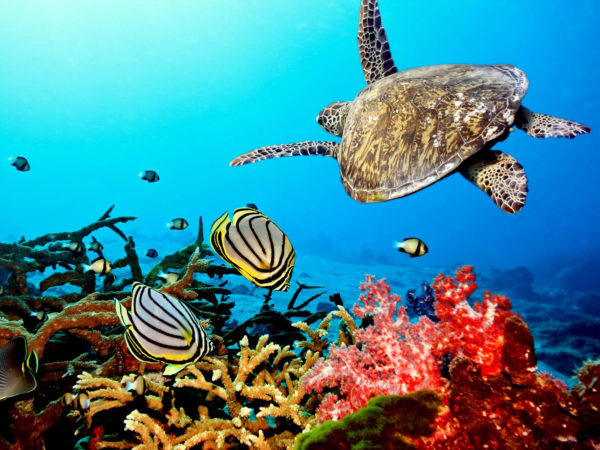
Beauty and Biodiversity
A Fairy Tale World of Colors and Patterns
One of the most fascinating things in the world is the life cycle of the coral. Coral reefs are diverse, but their life cycles are more or the less the same as around the world: eggs are created, they develop and sink to the ocean floor, and there they grow as coral.
The whole process is quite fascinating. Polyps (coelenterates resting on the exterior of the reef) release sperm and the coral release eggs. Polyps, by the way, resemble overturned jellyfish. Male and female germ cells (gametes) meet in the ocean, and they travel to the surface. The cells break apart (they are actually forced to split open) near the surface of the ocean, and fertilization takes place.
The eggs begin to divide and develop after only a few hours after fertilization. The egg, once it becomes a planula larva, floats on the surface for days, collecting symbiotic algae as it grows. After three to four weeks, the larva develops into a polyp.
The larva settles on a reef at the ocean floor once it grows large enough. Once the larva becomes a polyp, it will begin to harden. All this time, it attaches itself to the floor and is completely motionless. The hardening process is stimulated by Zooxanthellae, which is yellowish-brown symbiotic dinoflagellate that attaches itself to the polyp.
The polyp continues to develop, producing features like a mouth and tentacles. And the life cycle of the coral will restart. Reefs are formed as polyps settle around corals, and if a polyp lands on a coral, more gametes are produced and the reef grows even larger.
Coral reefs are precious, and it is so interesting to learn about their life cycle. Hope you enjoyed learning!
Fatima M.
Freelance Blogger




Follow Us!